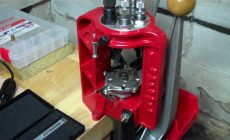Using traps and snares is one of the most effective and earliest forms of hunting and getting food. Depending on the environment you are surviving on and the availability of your resources, you can create survival snares and traps to get a steady supply of food to ensure you and your family’s survival. Makeshift traps and snares are also very easy to create and set up making it a very effective source of food supply when survival hunting. Here are some important points to note to be effective with any types of traps and snares.
- Be familiar with the species of animal you intend to catch.
- Do not alarm the prey by leaving signs of your presence.
- Be capable of constructing a proper trap.
In order to know what type of trap and snare to create, you have to determine which type of animal is living in the area you are surviving. These can be done by looking for the following:
- Runs and trails.
- Tracks.
- Droppings.
- Chewed or rubbed vegetation.
- Nesting or roosting sites.
- Feeding and watering areas.
Below we have a bunch of videos that talk about the different types of snares and traps you can make. If you need a field handbook, The Bushcraft Handbooks – Traps & Snares is a must have. We echo one reviewers sentiment who wrote “In my opinion this is the best book in the bushcraft handbook series. Great illustrations and the directions are straight to the point. A must have.”
How to Set up Traps and Snares
It is important to understand that proper positioning of your trap and snare is important to be successful. You have to position your traps and snares where animals pass through. Determining an animal trail or run is also very important so you will know what type of trap or snare to set up. An animal trail will show signs of use by different kind of species while an animal run would be smaller and more distinct trail of a single species. Building a perfect snare is only the beginning; you need to know where to properly place them to catch anything. Keep in mind that animals have feeding areas, breeding areas, and water holes with trails that will surely lead to one another. These are the areas where it is best to put traps and to successfully catch an animal.
To be successful always keep in mind to mask or remove any human scent around and on the trap or snare you set. This can be done by using the fluid from the gall and urine bladders of previous kills. Never use human urine as it will surely alarm the animals. Mud, particularly from an area with plenty of rotting vegetation, is also good. Use it to coat your hands when handling the trap and to coat the trap when setting it.
How to Construct Traps and Snares
It is important to keep in mind the basic mechanisms of a trap or snare and how it works. What provides power to the trap would be the struggling victim, the force of the gravity and tension from the bent sapling you used. The main principle of a trap or snare would be to choke, crush, entangle, or hang a prey.
Trigger is the main heart of any trap or snare. Knowing how your trap would affect the prey and your source of power will give you an idea of the most efficient trigger for your trap. By studying this you will know what specific trap or snare you need to build for each species. Traps are for catching and holding or catching and killing while snares are a kind of trap that has a noose for either function. Check this video to know the basic techniques in making survival traps:
Types of Snares
- Simple Snare
Place a noose over an animal trail or den hole and attach it to a firmly planted stake. Using small twigs and blades of grass hold up the noose if it is some type of cordage and place it upright on a game trail. You can also use spider web filaments for holding nooses open.
The noose should be large enough for the animal to pass freely with the noose over its head. The noose tightens around the animal’s neck as the animal continues to move and struggle. Wire is the best choice for a simple snare as cordage usually slips off the animal’s neck. Here’s a quick video tutorial on how to make a simple trap:
- Drag Noose
Use a drag noose on an animal run . Place forked sticks on either side of the run and lay a sturdy cross member across them. Tie the noose to the cross member and hang it at a height above the animal’s head. (Nooses designed to catch by the head should never be low enough for the prey to step into with a foot.) As the noose tightens around the animal’s neck, the animal pulls the cross member from the forked sticks and drags it along. The surrounding vegetation quickly catches the cross member and the animal becomes entangled. Watch these video for more information on how to set up a drag snare:
- Twitch Up
A twitch-up is a supple sapling, which, when bent over and secured with a triggering device, will provide power to a variety of snares. Select a hardwood sapling along the trail. A twitch-up will work much faster and with more force if you remove all the branches and foliage.
- Twitch-Up Snare
A simple twitch-up snare uses two forked sticks, each with a long and short leg . Bend the twitch-up and mark the trail below it. Drive the long leg of one forked stick firmly into the ground at that point. Ensure the cut on the short leg of this stick is parallel to the ground. Tie the long leg of the remaining forked stick to a piece of cordage secured to the twitch-up. Cut the short leg so that it catches on the short leg of the other forked stick. Extend a noose over the trail. Set the trap by bending the twitch-up and engaging the short legs of the forked sticks. When an animal catches its head in the noose, it pulls the forked sticks apart, allowing the twitch-up to spring up and hang the prey. Checkout this video for more details on how to make a twitch up snare:

























2 Comments
packers makers
April 9, 2019 - 10:56 amwow really great!!
James Lantz
April 10, 2020 - 3:55 pmI’ve always been curious on how to make a snare. I liked how the article had different methods and videos to learn.